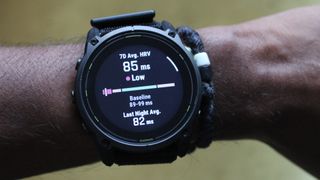
In an age of relentless technological evolution, industries are embracing cutting-edge innovations to revolutionize efficiency, safety, and productivity. Sujith Kumar Kupunarapu ’s insightful research, published in the International Journal of Research in Computer Applications and Information Technology , highlights two groundbreaking technologies poised to reshape the landscape of enterprise and industrial operations: Multi-agent Large Language Models (LLMs) and Augmented Reality/Virtual Reality (AR/VR). By examining their transformative potential, the article uncovers how these advancements address operational challenges, streamline processes, and pave the way for smarter, safer, and more dynamic environments.
Traditional enterprise collaboration using Agile and Waterfall faces inefficiencies, fragmented communication, and errors. Multi-agent Large Language Models (LLMs) address these challenges by revolutionizing documentation and collaboration through advanced natural language processing and tailored domain-specific expertise, ensuring efficiency and accuracy. Task Automation and Documentation : Multi-agent LLMs automate the creation of tasks and generation of consistent documentation, reducing manual efforts and ensuring seamless team alignment.

This minimizes errors and accelerates project timelines. Real-time Insights for Decision-Making : By analyzing project data, these systems offer actionable insights and recommendations, enabling informed and timely decisions. Scalability Across Industries : Adaptable to diverse sectors, including finance and manufacturing, LLMs provide standardized workflows and robust knowledge management systems.
This automation not only streamlines operations but also empowers employees to focus on strategic, value-driven tasks. However, widespread adoption requires addressing data privacy concerns and equipping teams with new skills. In industrial environments, particularly those reliant on heavy machinery, ensuring safety and optimizing efficiency are critical priorities.
Augmented Reality (AR) and Virtual Reality (VR) technologies have emerged as transformative solutions, offering immersive advancements in training, operations, and maintenance. Augmented Reality for Enhanced Awareness : AR overlays real-time data, such as load weights and hazard warnings, onto an operator’s field of view, improving situational awareness and reducing the risk of errors or accidents. By integrating with existing systems, AR facilitates quicker, more accurate decision-making in high-stakes scenarios.
Virtual Reality for Training and Remote Operations : VR creates immersive training environments where operators can safely learn and practice handling complex machinery without real-world risks. Additionally, VR enables remote operation of equipment in hazardous settings, safeguarding personnel while maintaining operational continuity. By bridging the physical and digital worlds, AR/VR fosters safer, more efficient industrial ecosystems.
The synergy between multi-agent LLMs and AR/VR technologies represents a groundbreaking advancement in the evolution of Industry 4.0. These innovations complement each other, with LLMs enhancing efficiency in enterprise workflows and AR/VR tackling complex operational challenges in industrial settings.
Their combined capabilities unlock transformative possibilities, such as: Autonomous Operations : Integrating AI-driven analytics with immersive AR/VR interfaces enables semi-autonomous systems, boosting productivity while minimizing reliance on human intervention. Digital Twins : By leveraging AR’s visualization and real-time data, digital twins replicate industrial environments, providing a platform for risk-free optimization and strategic decision-making. Sustainable Practices : The precision these technologies bring reduces waste and energy consumption, aligning industries with sustainability and environmental responsibility goals.
This collaboration reshapes industries toward smarter, sustainable operations. While the potential of these technologies is transformative, their adoption presents notable challenges. High initial implementation costs can limit accessibility, especially for smaller organizations, while cybersecurity risks grow as systems become more interconnected.
Additionally, adapting the workforce to these advancements requires extensive training, posing a steep learning curve for many industries. Moreover, existing regulatory frameworks must evolve to address the unique demands of these innovations, ensuring seamless integration into current systems while maintaining stringent operational standards and robust data security measures. In conclusion, Sujith Kumar Kupunarapu ’s detailed exploration of Multi-agent LLMs and AR/VR technologies underscores their profound potential to transform enterprise and industrial operations.
These technologies not only address longstanding inefficiencies and safety challenges but also open doors to smarter, safer, and more sustainable practices. By streamlining workflows, enhancing precision, and fostering innovation, they are redefining operational landscapes. As industries adopt these advancements, they are poised to enter a new era characterized by seamless collaboration, improved decision-making, and a commitment to operational excellence and environmental sustainability.
.















